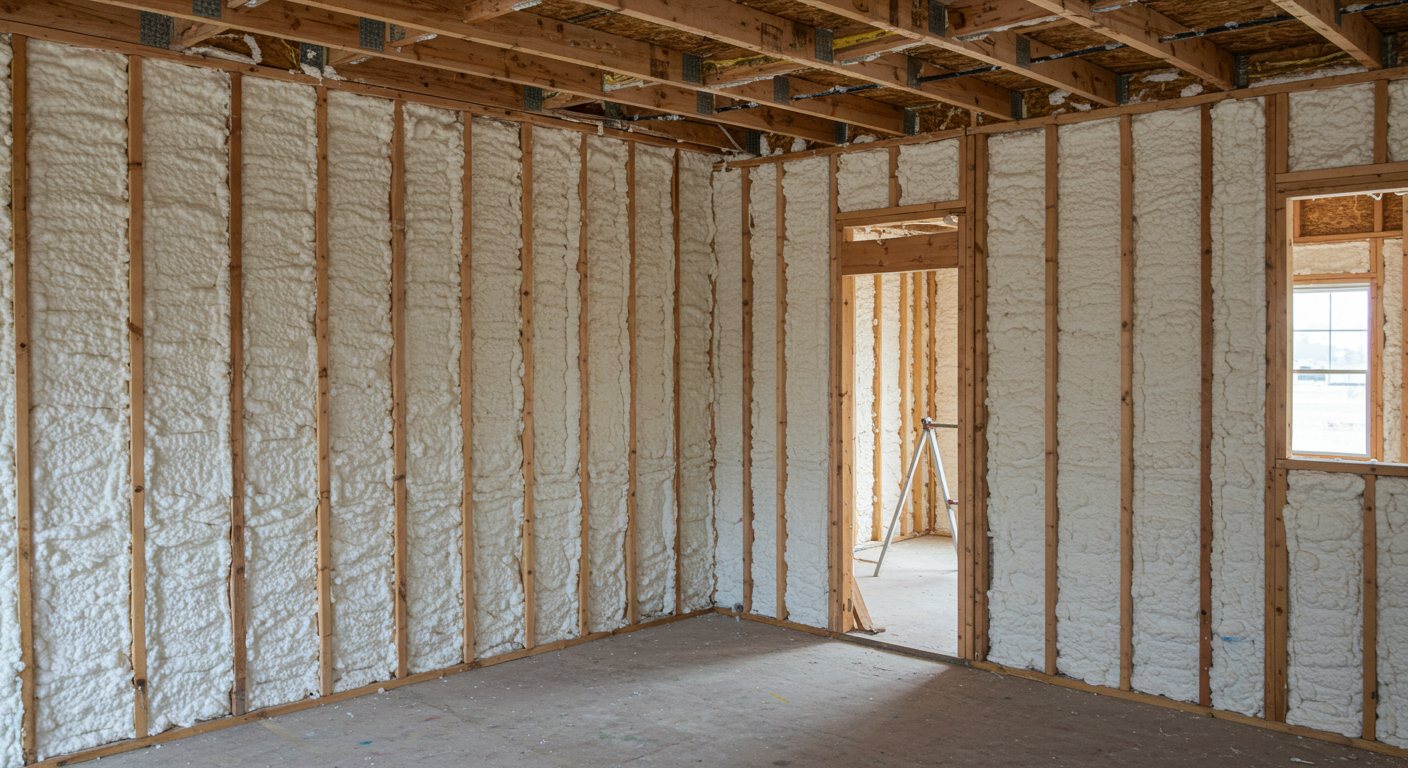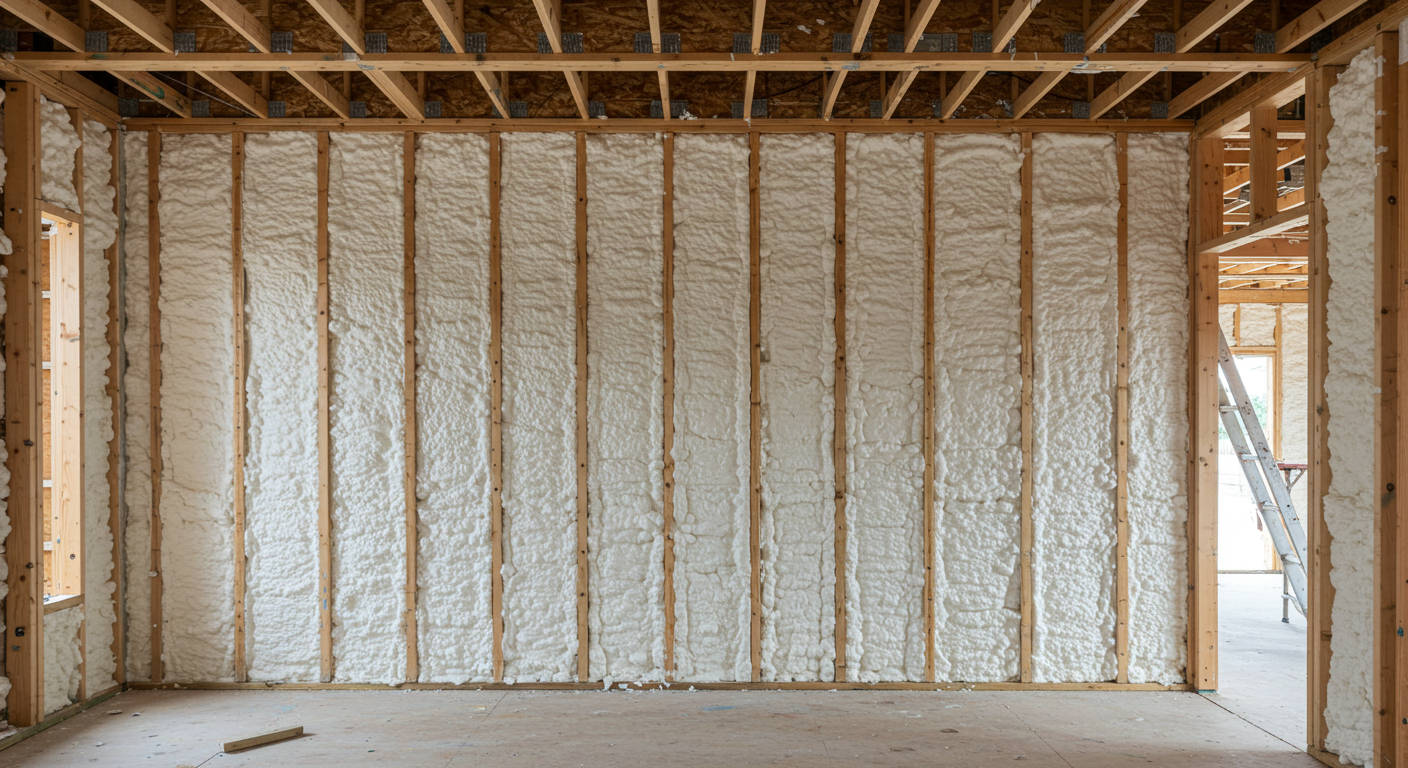
Spray foam insulation significantly reduces energy use in buildings by creating an airtight seal that minimizes air leaks. This leads to lower heating and cooling demands, which directly reduces greenhouse gas emissions tied to electricity and fossil fuel use. Its long-term durability also means less frequent replacement and reduced material waste.
Spray foam contributes to improved indoor air quality by limiting outdoor pollutants and allergens from entering the space. At D&D Insulation, we specialize in using spray foam that also offers moisture resistance, helping prevent mold growth—a common issue in humid regions. The material’s ability to stabilize interior temperature reduces reliance on HVAC systems, conserving energy year-round.
By sealing gaps and cracks more effectively than traditional options, spray foam lowers heating and cooling loads. Homes and buildings require less energy to maintain comfortable indoor temperatures.
Decreased energy use leads to reduced emissions from power plants. In Texas, where coal and natural gas still account for over 60% of electricity generation (EIA, 2023), reducing demand has a measurable impact on air quality and carbon output.
Spray foam insulation remains effective for decades. This minimizes the need for reinstallation, leading to lower material consumption and fewer trips to landfills.
By blocking airborne moisture, spray foam helps prevent mold a frequent issue in Gulf Coast climates. Preventing mold protects both indoor air quality and structural longevity.
| Feature | Spray Foam Insulation | Fiberglass Batt | Loose Fill Cellulose |
|---|---|---|---|
| Airtight Seal | Yes | No | Moderate |
| R-Value per Inch | 6.0-7.0 (Closed Cell) | 3.1-3.4 | 3.2-3.8 |
| Material Longevity | 20-30+ Years | 10-25 Years | 10-20 Years |
| Mold Resistance | High | Low | Low to Moderate |
| Moisture Barrier | Yes (Closed Cell) | No | No |
| Energy Savings | High | Moderate | Moderate |
| Emissions Impact | Low (Indirect via savings) | Higher | Moderate |
| Property | Open Cell Foam | Closed Cell Foam |
|---|---|---|
| R-Value (per inch) | 3.5-3.8 | 6.0-7.0 |
| Density | 0.5 lb/ft³ | 2.0 lb/ft³ |
| Water Resistance | Low | High |
| Air Sealing Capacity | High | High |
| Sound Absorption | High | Moderate |
| Thermal Drift Over Time | Minimal | Minimal |

In humid climates like Central and East Texas, high moisture levels make closed cell spray foam the preferred choice for roofing and wall cavities. It resists water and reduces the risk of mold inside framing cavities. Heat exposure is another factor; spray foam helps maintain stable attic temperatures, which is critical when outside temperatures reach 100°F or more.
Always inspect for existing leaks or unsealed gaps before applying spray foam. Poor preparation can compromise long-term performance.
Apply closed cell foam in controlled layers. Thick passes can overheat and fail to cure properly.
No. Once cured, spray foam does not off-gas harmful VOCs. Ensure proper curing time and ventilation during installation.
By sealing leaks and insulating efficiently, it maintains stable indoor temperatures, requiring less energy from HVAC systems.
Yes. It can be retrofitted in attics, crawl spaces, and wall cavities to improve performance.
Spray foam is not currently recyclable at scale, but its durability reduces overall material waste over time.
For support in selecting and applying the right insulation solution, contact:
D&D Insulation LLC Phone: (903) 389-5705 Email: [email protected]
Speak with trained professionals who understand local building requirements and climate-specific needs. Reach out for a site evaluation or quote.
Closed cell foam can last over 30 years without major degradation under normal conditions.
No scheduled maintenance is required. Inspection is recommended after extreme weather or structural work.
Most rodents do not target spray foam, but entry points should be sealed before installation.
Proper application with attention to vapor barriers prevents trapped moisture.
Spray foam can be added in layers. It’s critical to match the type and density for consistent performance.